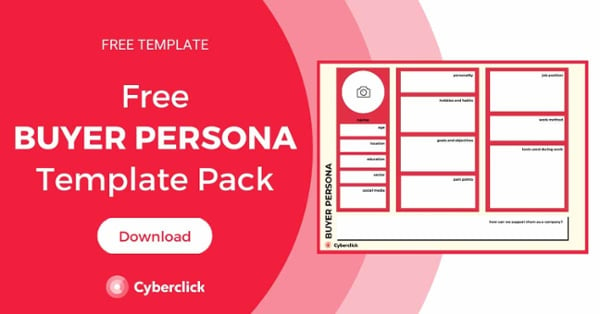By Shanon Roberts, on 12 December 2018
Who doesn’t enjoy telling or listening to a good story? A story outlines experiences, challenges, and maybe even solutions. If a story is particularly creative and inspiring and is able to transport you, it's art!
In this article we will explore how to apply digital storytelling in marketing.
Why Digital Storytelling Is Important
American director and screenwriter Andrew Stanton defines storytelling as “knowing that everything you’re saying, from the first sentence to the last, is leading to a singular goal, and ideally confirming some truth that deepens our understanding of who we are as human beings”.
Digital storytelling is about brands evoking wonder through their digital channels. In the noise of online marketing, it should hold your audience captive for a brief moment in their day.
4 Ways to Use Storytelling to Connect With Your Audience
Through digital stories, you can connect with your target audience by letting them experience the similarities they have with your brand. When your audience understands where you come from, the obstacles you're facing, and the efforts you are making achieve your 'why,' they develop empathy for your brand.
The goal of your story is to make them care. So how do you do that? Here are 4 tips outlined by Andrew Stanton.
Make it relevant: to capture attention, start by making your message relevant. It’s important to show your audience why your story is worth their time within the first 10 seconds in order to make them care enough to stop scrolling.
Add anticipation: life is not static, and a great story will not be either. Create moments of anticipation and uncertainty by including obstacles in your story that lead your audience to question, how it will conclude.
Don't give all the information at once: humans are born problem solvers; the absence of information draws us in. Digital storytelling is about shaping your digital channels so that your audience can develop a truth about your brand. Allow your audience to take part in your brand and form their own conclusions.
All about your ‘why’: every action, event, touchpoint, and message should relate to your end vision. Communicating your story your online audience to relate to your journey.
3 Steps for Creating Memorable Stories
Isabel Allende, the renowned Chilean author, storyteller, and activist, outlines 3 ways to tell a story your audience will remember.
Create a character. A character can either be a persona related to your product/service, or it can be your product/service personified. Give your character context and outline their defining characteristic.
Control your image. Your digital image should evoke the message of your story. Elements of your digital image include your webpage, email templates, social media profiles, google description, and more.
Let your actions speak for themselves. Digital activities can include webinars, live events, and promotions. Online campaigns use hashtags across social media channels to convey a particular message or corporate value. Convey your passion. This captures people's attention and engages them in your story.
How to Plan, Tell, and Sell Your Story
Storytelling in digital marketing can successfully capture people's attention and increase brand awareness.
- Story planning. Keep a log of potential story content as well as notes on stories for different customer segments and campaigns. Start by making your audience care. Always start your planning with the question, “why does this matter?” The answer to this question may change as you develop your story.
- Storytelling. As Simon Sinek mentions in his "Golden Circle" theory, the hooking point for an audience is understanding the ‘why.' Providing detailed imagery of the characters involved in your story will foster interpersonal connection and will make a stronger impression. The structure is also an important element to consider. It’s important to have a clear beginning, middle, and end. Beyond this, a story that conveys conflict, vulnerability, and relatable achievement will keep your audience captivated. Build and release tension by balancing the following: obstacles and success, positive and negative emotions, questions and answers, strengths and vulnerabilities, and truths and uncertainties. The journey is the most interesting part, not the ending.
Selling your story. Practice and test your story with various audiences, so that when you get to your core audience you can tell a story that you’ve told many times before. Digital channels provide insights on reach and engagement, which can help you find the right approach to communicate your message. You can also make use of live videos on Instagram or Facebook to engage your audience and ask questions.
Tell a Great Story and No One Will Care It’s an Ad
Remember that ad you saw yesterday on TV right after your favorite show ended? Probably not. What about that pop-up that you closed while browsing the internet? Even less so. If you don’t pay attention to these ads, why would your viewers?
Sometimes, less is more. The key is to create an experience that matters. It could be one that is amazing, hilarious, entertaining, moving, heartbreaking, heartwarming, motivating, etc. Tell a story that will rope your audience in and emotionally connect with them. Before you know it, they will be sharing it when their network, and your content has the potential to created an entire movement.
This is the beauty of the digital age that we live in. People have the ability to quickly and easily share anything with anyone in the world. Without a powerful message, however, tools and technology become irrelevant, and you risk ending up lost in the noise of digital marketing.
Your story doesn't even have to be related to your product–the whole point is to make it so interesting and attention-grabbing that viewers will be begging to know what your brand is about. Do this, and people will be actively searching for your ad!
3 Examples of Great Video Ads
Old Spice designed a commercial that became a global phenomenon within a matter of days. It generated memes, countless parodies, remixes, and imitations. Oprah and Ellen even dedicated parts of their shows to it. In the words of Oprah Winfrey herself, “I love that commercial so much, I’m about to buy me some Old Spice.”
Old Spice: The Man Your Man Could Smell Like
P&G: Thank You Mom
P&G created an ad for the 2014 Winter Olympic Games that will make you want to cry and laugh at the same time. it might even make you want to call your mother!
CoorDown: Dear Future Mom | World Down Syndrome Day
Through this ad, CoorDown raised awareness for World Down Syndrome Day by sending a message to all future mothers, assuring them that children with Down syndrome can have a happy life.
All in all, be creative, innovative, and think outside the box. Start brainstorming ideas and weaving a story that moves people and lets them know who you are and what you stand for. In turn, this will evoke emotion from your audience and make them want to get to know your brand.


